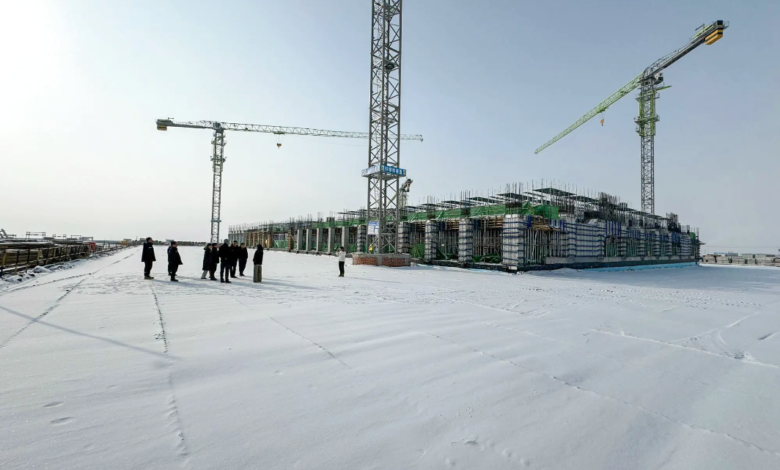The first large gravity battery EVx connected to the Chinese grid

The first large commercial gravity battery
(sustainabilityenvironment.com) – They’re called gravitational batteries or gravity batteries, but traditional electrochemical technologies have nothing to do with it. They are storage systems capable of converting the potential energy of an object in a controlled fall into electricity (discharge phase). And vice versa, use electricity from the network to power a lifting system of the same object (charging face).
Exploiting this energy is an idea that goes back hundreds of years but, excluding pumped-storage hydroelectric plants, we had to wait until 2012 to get the first working battery prototype. Since then the interest has gradually increased and with it also the experiments and the research. But there are already people in the industry who are as serious as the Energy Vault specialist. The Swiss company has recently announced the interconnection of the first commercial-scale EVx gravitational battery to the Chinese state electricity grid.
The potential of gravitational accumulation
We are located in Rudong County in eastern Jiangsu Province. From the end of December 2023, the Energy Vault plant, a large electrical storage complex using G-VAULT technology, is in service. In detail, the system uses a mechanical process of lifting and lowering composite blocks to store and distribute electricity. The highlight of the technology? Decoupling power and energy while maintaining high return efficiency (over 80%).
But Rudong’s gravity battery also stands out for other qualities. Designed to provide 25 MW of power and 100 MWh of storage capacity, once all authorizations have been obtained, commercial operations can begin. Obtaining the title of first gravity storage system on an industrial scale (without pumping).
The new battery is also part of a list of projects with the classification of “new energy storage demonstration pilot projects” carried out by the National Energy Administration of China. Being on the list means being able to receive greater management supervision by the energy authorities at the provincial level and bureaucratic facilitation.
China’s love for gravitational energy storage
For Energy Vault, Rudong will not even be the only large gravitational storage facility in China. In 2023, together with partners CNTY and Atlas Renewable, announced a series of EVx projects: a 17 MW/68 MWh system located in the city of Zhangye, in the province of Gansu; a 50 MW/200 MWh located in the city of Ziuquan, same province; a 25 MW/100 MWh plant designed in the city of Huailai Cunrui, in the province of Hebei.
“I am delighted to see the growing interest from the Chinese market in Energy Vault’s gravitational storage technology,” said Robert Piconi, President and CEO of the company. “We look forward to sharing further performance and developments in the coming weeks and months as the design and commissioning activities continue at a rapid pace”.





